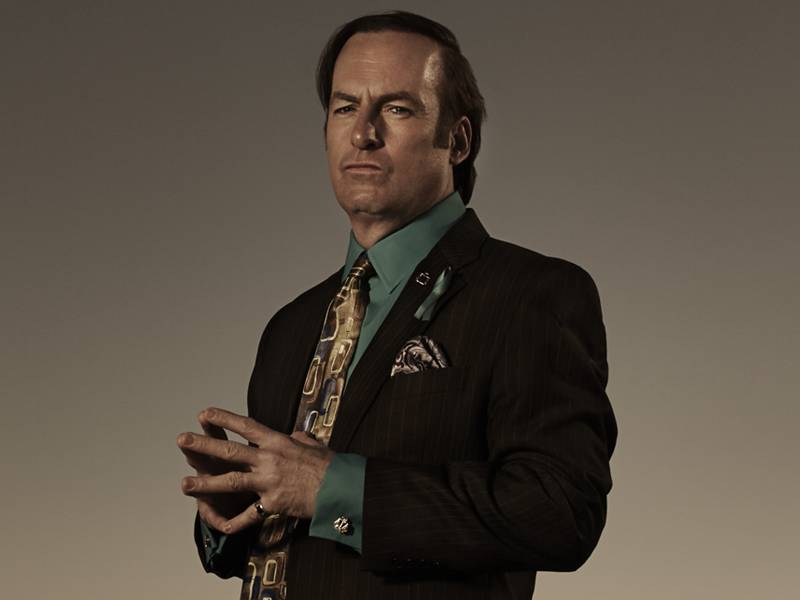 Recovering the Responsibility of Every Believer is the final section of Recovering From Biblical Manhood and Womanhood. Byrd has been addressing what is wrong, and why it is wrong. Now are her attempts to move the church forward. The first chapter asks the question: Is This the Way It Was Supposed to Be?
Recovering the Responsibility of Every Believer is the final section of Recovering From Biblical Manhood and Womanhood. Byrd has been addressing what is wrong, and why it is wrong. Now are her attempts to move the church forward. The first chapter asks the question: Is This the Way It Was Supposed to Be?
Byrd begins with wanting you to put yourself in Martha’s shoes with Jesus coming over for dinner. That Jesus was coming to their home was remarkable in itself. On the streets rabbis and women wouldn’t speak. Mishnah, Aboth 1:5 says: “The wise men say: ‘Who speaks much with a woman draws down misfortune on himself, neglects the words of the law, and finally earns hell.” In other words, not only was it not worth their time, but was seen as a detriment and to be avoided. Women were not part of theological conversations, or political ones.
Having Jesus over violated some of the cultural boundaries that had been established. Jesus didn’t seem to be bound by cultural boundaries; recognizing them for what they were, and were not. While there were no women Apostles, there were women contributing to his ministry and traveling with them at times. But for as bold as Martha was in inviting him over, she kept to the kitchen when Jesus came over. But Mary didn’t. This in a culture when there was opposition to teaching a woman Torah. Some rabbis would teach women enough Torah to know their place, but not all of the Torah. Jesus, on the other hand, told Martha that Mary had chosen the one thing necessary. It was necessary for her to sit and be taught by Jesus. She was a disciple, not merely an interested bystander. Mary, and Martha, had a vested interest in sitting at the feet of Jesus. Women were welcome!
Jesus’ involvement with women reveals that in His kingdom women mattered. He healed women, talked with them in public, and taught them. He traveled with them, and received support from them. This leads to some difficult questions because some churches seem to keep women are arm’s length or only in certain roles.
“Many churches thus limit, in ways they do not limit for laymen, the capacity for laywomen to learn deeply and to teach. … Are the laywomen disciples in your church serving in the same capacity as the laymen?”
Notice what she is saying there. She is talking about laypeople, as distinct from officers. Are men and women able to do the same things in your congregation, or have you decided somethings are for men and some for women?
She returns to the idea of the ezer and the necessary ally. Adam cannot fulfill his mission without Eve, and not just the baby-making part. Women exist for more than bearing and raising children. Since they are members of the church by grace, just like the men, they should be discipled as necessary allies. They are not to be considered “optional, subordinate assistants.” Byrd tries to balance the reality of church offices and the priesthood of believers who get their hands dirty with the work of ministry.
Paul recognized a number of women for their work in the early church. In addition to Phoebe we find Prisca, Chloe, Nympha, Apphia, Lydia, and Junia. This is in addition to the Marys recognized in the Gospels for their role in the earthly ministry of Jesus. Many of them hosted church meetings (I’m not convinced that means leading the church, as Byrd says about Lydia).
We also see that often women were among the first people Paul recognized in his letters. The custom of the day was ordering reflected the status or influence of the individuals. You put the more important people first.
Do we value women like that in our churches? Do we trust women like that in our churches?
The Silence of Women?
1 Corinthians 11-14 give us a glimpse of worship in the early church. What it says about women is important, and part of how Christians today view the participation of women in church life, and the worship service. At the heart of this is 1 Corinthians 14:34 which some people take as absolute and the final and only word on this subject.
As in all the churches of the saints, 34 the women should keep silent in the churches. For they are not permitted to speak, but should be in submission, as the Law also says.
This is universal, as indicated by “in all the churches”. But this passage is part of a larger context. That seems to be ignored by many who minimize the role of women in church and worship. Why do I say that? Well, because in 1 Corinthians 11 Paul talks about women prophesying and praying in the corporate worship service. Is this a conflict or contradiction? Not if we understand them in context.
 Some argue that in 1 Corinthians 11 Paul is being ironic, and that if they were to pray and prophesy they should wear a head covering. But they don’t actually (the argument goes), as we see in 1 Corinthians 14. If he’d written that they were to be silent before saying they pray and prophesy, I could maybe understand this. Because of this strange way of looking at 1 Corinthians 11-14, Byrd talks about those places in many towns called Spook Hill when it feels like the car is rolling uphill. I lived near one in central FL. Things get “spooky” when we talk about these texts. “The landscape can be deceiving.”
Some argue that in 1 Corinthians 11 Paul is being ironic, and that if they were to pray and prophesy they should wear a head covering. But they don’t actually (the argument goes), as we see in 1 Corinthians 14. If he’d written that they were to be silent before saying they pray and prophesy, I could maybe understand this. Because of this strange way of looking at 1 Corinthians 11-14, Byrd talks about those places in many towns called Spook Hill when it feels like the car is rolling uphill. I lived near one in central FL. Things get “spooky” when we talk about these texts. “The landscape can be deceiving.”
The issue has to be resolved by examining the context of 1 Corinthians 14:34 which is the evaluation of the prophecies. Byrd follows an number of people including the other Keller, Kathy, as well as Stephen Um (a PCA pastor) and Ben Witherington in seeing the silence limited to the judging of the prophesies which is the exercise of authority (in keeping with 1 Tim. 2:12). They were not exercising teaching authority. They were not to speak when that was happening. But they could pray and prophesy while wearing the sign of authority. This implies that whatever the prophecy was, it was not authoritative and needed to be examined by the elders to see if it was consistent with the Scripture and teaching they had.
As Christians all contribute to the worship service (not just the men), they are to act in love (1 Cor. 13 is the hub of all this). Every Christian gets spiritual gifts, having been baptized by the Spirit (1 Cor. 12) and they are not distributed by sex. Don’t confuse gifts with office. All Christians were encourage to sing, to pray, to prophesy or speak in tongues (assuming there was an interpreter). When it came time for the prophecies to be judged, the women were to be silent. The silence was tied to a particular time in the service for the exercise of authority.
“Upholding the proper order of worship, respecting the officers of the church, and refraining from noninspired speech that disrupts worship all fall short under the command all fall under the command of the Lord to love- the very thing Christians should be known for. And these are lasting principles for the church today.”
Consequences for Worshiping Together
 The church is the household of God. We should treat fellow members with affection and respect. That they did this was misinterpreted by many critics of the church. The early church was accused of incest, among other things. The imaginations of unbelievers had run wild. But instead of following the cultural practices of their culture, the Christians treated each other as brother and sister, with a pure affection for one another rather than avoidance or keeping a proper social distance.
The church is the household of God. We should treat fellow members with affection and respect. That they did this was misinterpreted by many critics of the church. The early church was accused of incest, among other things. The imaginations of unbelievers had run wild. But instead of following the cultural practices of their culture, the Christians treated each other as brother and sister, with a pure affection for one another rather than avoidance or keeping a proper social distance.
This was a function of their identity in Christ, in whom there is neither male nor female. They are equal in His eyes, and equally sons and heirs of salvation. None are second class citizens. The shared a heavenly citizenship that shaped their social interactions. This is what led to some of the persecution they experienced.
Peel and Reveal
Byrd returns to the question of what men and women can do in a worship service. “Have we properly retrieved what the early church has passed down?” She wonders if there is something particularly masculine about collecting the offering. You might say that’s for the deacons, and in the PCA you’d be wrong. It is their responsibility to plan and organize it, but they don’t have to execute it (BCO 9-2). Women can technically be asked to help with it. We sometimes use unordained men to help if there aren’t enough deacons. We could, theoretically, as laywomen to help too. Then again, maybe they don’t want to be bothered.
Remember, Paul encouraged full member participation in most of the worship service. Whether or not our worship services reflect this matters in terms of how we are seen by the world. In the early church the participation of women was seen as scandalous by the world. Today the lack of participation of women in some churches is seen as scandalous by the world.
“Whatever our stance is on ordination, these are the questions we should be asking. And yet for some reason, even when we discuss the contributions of laypeople, the church is still stuck on this problem of women and where to draw the line. As one article published in CBMW News put it, “But What Should Women Do in the Church?”
This article by Grudem is mis-titled, in my opinion. “Should” isn’t the same as “can”, and this should be about what they “can” do. Grudem proceeds to list 83 different types of service in the church and evaluate them with guidance from the Danvers Statement. His personal lines are even stricter (at that time anyway). He discusses hierarchies of authority and influence. In this view, women shouldn’t have authority or influence over men. How exactly should a woman ask a men to set up a table for a pot lock, I wonder. Must she go to her husband and ask her to tell the man to put in a particular place? Is that actually authority? Does the man have to do it or face church discipline?
“We would define authority in general as the right and power and responsibility to give directions to another.” Piper and Grudem
In this way they separate laymen from laywomen ontologically and allow laymen to exercise authority in the church but not women except over kids, and maybe other women. This would all imply that no one is under the authority of the Session and being asked by them to fulfill that task or function. Any authority is delegated authority or responsibility. My wife has plenty of delegated authority at home.
Peeling Back Yellow Fractions
Byrd argues that these lists of hierarchy fall into a similar error as the egalitarians. These lines can be quite arbitrary and not reflective of Scripture, just as the egalitarian lines are not reflective of Scripture. The CBMW reveals a fractional complementarianism, broken down by what women can and cannot do. Most of this section is a series of questions. She plays the interrogator instead of providing the answers. She wants us to work through it.
This gets back to how one views women. In 1 Corinthians 11 a wife is her husband’s glory. In terms of creation she came from Adam’s side just as the Church comes from Christ’s wounded side. Together Adam and Eve were to fulfill the creation mandates. There was no division of labor based on gender. In heaven there will be no such division of labor either.
“Now let’s return to CBMW’s definition of authority … Is authorization (authority?) an ontological right that belongs to a particular sex, a power bestowed on men to always have the say-so in all things? … While church officers have a distinct authorization in teaching and ruling, brothers and sisters who hear the Word of our Groom are authorized as a priesthood under this ministry to testify to Jesus to one another.”
Time for a story. During a pastoral transition I applied for a job with a national insurance company. I was called for a series of interviews in another city. I brought CavWife and we enjoyed some time without the 2 kids. In my first interview I discovered that I had uploaded the wrong resume. I had uploaded the one for church positions which mentioned male headship in home and church. The woman interviewing me wanted to know if I could work for a woman boss. Well, I’ve worked for a number of them in the past (and would in the future as well) and never had an issue submitting to a woman in school or the workplace. If I struggled it was about what they asked me to do, not due to their gender. Women can exercise authority over men, and we need to stop arguing that they can’t. That is NOT biblical manhood and womanhood. That is closer to the oppression of women in the past.
The question we need to be asking is what are only ordained officers allowed to do. The rest would be left open to laypeople at the discretion of the Session (elders). Convictions produce practices, and our practices reveal our convictions.
I’ll give Aimee Byrd the final word today.
“What corresponding strength do your women have to offer? Rather than bury and hide what the Lord has given under an imaginary line on a hierarchical list, how can your church be counter-culturally capable as opposed to some of the accepted teachings of so-called biblical manhood and womanhood in evangelicalism? Why is this necessary?”
 Byrd advocates for the covenantal context of discipleship. The visible church is a covenant community. We’ve made promises to teach all as Christ commanded.
Byrd advocates for the covenantal context of discipleship. The visible church is a covenant community. We’ve made promises to teach all as Christ commanded. She reminds us it is “helpful to distinguish between primary doctrinal issues, secondary issues, and even third-order issues of differences.” Oddly she footnotes an Al Mohler, of the aforementioned Southern Seminary, article from 2005 called “A Call for Theological Triage and Christian Maturity”. There is also a book by Gavin Ortlund called
She reminds us it is “helpful to distinguish between primary doctrinal issues, secondary issues, and even third-order issues of differences.” Oddly she footnotes an Al Mohler, of the aforementioned Southern Seminary, article from 2005 called “A Call for Theological Triage and Christian Maturity”. There is also a book by Gavin Ortlund called  Earlier she used work from Swain (and Michael Allen) to talk about retrieval from
Earlier she used work from Swain (and Michael Allen) to talk about retrieval from  This is a short chapter and she gets to the application quickly. She returns to her opening metaphor. We don’t passively wait to be fed, like birds in a nest (my addition). She sees discipleship as foundational to church life; tasting and seeing that the Lord is good so that we are nurtured and equipped to serve Him. Church officers are responsible to disciple men and women.
This is a short chapter and she gets to the application quickly. She returns to her opening metaphor. We don’t passively wait to be fed, like birds in a nest (my addition). She sees discipleship as foundational to church life; tasting and seeing that the Lord is good so that we are nurtured and equipped to serve Him. Church officers are responsible to disciple men and women. Back to Byrd’s book from that aside. She tried to address this publicly as well. As she tells it no one was listening. Then Liam Goligher did a guest post on her blog on this subject and the can of worms was opened. ESS became a big internet controversy.
Back to Byrd’s book from that aside. She tried to address this publicly as well. As she tells it no one was listening. Then Liam Goligher did a guest post on her blog on this subject and the can of worms was opened. ESS became a big internet controversy. And then she returns to norms. “I agree with Mark Cortez that we can still affirm some cultural norms associated with gender without holding that these must be essential to our sexuality.” But in this section she seeks to get metaphysical and philosophical. She depends on Sister Prudence Allen in pp. 124-30, and frankly I’m lost. Philosophy is not my strong point, and I’m not familiar with this philosopher. I got “fractional complementarity” and “integral complementarity”. She brings in Pope John Paul II, as well as Paul Zanacanaro and Julian Marias. In all this I couldn’t tell if she was using them positively (she does say they think more thoroughly and biblically) or negatively (since their conclusion sounds remarkably like Piper and Grudem). Just call me Vinnie because “I’m soooo confused.”
And then she returns to norms. “I agree with Mark Cortez that we can still affirm some cultural norms associated with gender without holding that these must be essential to our sexuality.” But in this section she seeks to get metaphysical and philosophical. She depends on Sister Prudence Allen in pp. 124-30, and frankly I’m lost. Philosophy is not my strong point, and I’m not familiar with this philosopher. I got “fractional complementarity” and “integral complementarity”. She brings in Pope John Paul II, as well as Paul Zanacanaro and Julian Marias. In all this I couldn’t tell if she was using them positively (she does say they think more thoroughly and biblically) or negatively (since their conclusion sounds remarkably like Piper and Grudem). Just call me Vinnie because “I’m soooo confused.” I met John Travers III, forever known simply as Travers, shortly after I moved to Orlando in 1991. I had lived in New England my entire life. I was going through some culture shock. As a northern Baptist at a mostly Presbyterian seminary, I found a local Southern Baptist Church with a Calvinistic pastor. It was there that I met John.
I met John Travers III, forever known simply as Travers, shortly after I moved to Orlando in 1991. I had lived in New England my entire life. I was going through some culture shock. As a northern Baptist at a mostly Presbyterian seminary, I found a local Southern Baptist Church with a Calvinistic pastor. It was there that I met John. This was part of the reason my visits among the Presbtyerians became a move. I got tired of being judged for enjoying a beer with my pizza. Orangewood was a very missions-minded church and I went on a mission trip with them to Mexico (3 eventually). Eventually the baptism coin dropped and I became a member, and under care and the rest is history.
This was part of the reason my visits among the Presbtyerians became a move. I got tired of being judged for enjoying a beer with my pizza. Orangewood was a very missions-minded church and I went on a mission trip with them to Mexico (3 eventually). Eventually the baptism coin dropped and I became a member, and under care and the rest is history.


 Think of Elisabeth Elliot for a moment. She was not a feminist by any stretch of the imagination. She wrote a book called Let Me Be a Woman, as opposed to rejecting any gender differences. She wrote an incredibly brief forward (one paragraph) to Piper’s What’s the Difference?. She had an important place in 20th century evangelicalism, not simply as the widow of Jim Elliot but as an author and speaker and seminary professor. She was a strong woman. Elisabeth’s materials were sold through Ligonier ministries for a while. At one point I was the point person for dealing with Lars, her husband at the time. She wasn’t supporting his role in the mission, but he supported her role in God’s mission. That included speaking at conferences filled with men and women, including Ligonier National conferences.
Think of Elisabeth Elliot for a moment. She was not a feminist by any stretch of the imagination. She wrote a book called Let Me Be a Woman, as opposed to rejecting any gender differences. She wrote an incredibly brief forward (one paragraph) to Piper’s What’s the Difference?. She had an important place in 20th century evangelicalism, not simply as the widow of Jim Elliot but as an author and speaker and seminary professor. She was a strong woman. Elisabeth’s materials were sold through Ligonier ministries for a while. At one point I was the point person for dealing with Lars, her husband at the time. She wasn’t supporting his role in the mission, but he supported her role in God’s mission. That included speaking at conferences filled with men and women, including Ligonier National conferences.
 As a more mature Christian, I submit to the Westminster Confession of Faith as a summary of what the Bible teaches. I believe it is consistent with Scripture, and it provides healthy boundaries for me. This standard doesn’t address these issues. I want to go where the Scripture leads as I affirm that the church is Reformed and always reforming.
As a more mature Christian, I submit to the Westminster Confession of Faith as a summary of what the Bible teaches. I believe it is consistent with Scripture, and it provides healthy boundaries for me. This standard doesn’t address these issues. I want to go where the Scripture leads as I affirm that the church is Reformed and always reforming. This has to be kept within the teaching of 1 Timothy 3 and Titus that the office of elder, and teaching with authority as an officer of the church, is limited to qualified men. While she doesn’t mention it yet, she does later on in the book. We should keep this in mind so we don’t accuse Byrd of arguing for something she isn’t. She doesn’t want women pastors. But she does argue that lay women ought to be able to teach lay men as well as women and children, if they are instructed and orthodox.
This has to be kept within the teaching of 1 Timothy 3 and Titus that the office of elder, and teaching with authority as an officer of the church, is limited to qualified men. While she doesn’t mention it yet, she does later on in the book. We should keep this in mind so we don’t accuse Byrd of arguing for something she isn’t. She doesn’t want women pastors. But she does argue that lay women ought to be able to teach lay men as well as women and children, if they are instructed and orthodox. Her newest book, Recovering from Biblical Manhood and Womanhood: How the Church Needs to Rediscover Her Purpose, has been the center of controversy. Many of the claims didn’t seem about right. I had some people in the congregation, and others outside of the congregation ask me what I thought.
Her newest book, Recovering from Biblical Manhood and Womanhood: How the Church Needs to Rediscover Her Purpose, has been the center of controversy. Many of the claims didn’t seem about right. I had some people in the congregation, and others outside of the congregation ask me what I thought. I have never read all of
I have never read all of  Due to a variety of circumstances, my mother’s memorial service and interring of ashes was delayed until June. At that point my aunt was dying. My cousin and I were very close as kids, and my aunt was an important person in my childhood. And as a result, my life. Since then, she lost her battle with cancer. I hope to talk to him soon, but I imagine his experience of grief is, and will be, very different than mine.
Due to a variety of circumstances, my mother’s memorial service and interring of ashes was delayed until June. At that point my aunt was dying. My cousin and I were very close as kids, and my aunt was an important person in my childhood. And as a result, my life. Since then, she lost her battle with cancer. I hope to talk to him soon, but I imagine his experience of grief is, and will be, very different than mine. As an adult I had to put my dog down. It was a horrible, no good day. I wept as he lay in my lap. How could I abandon him in those last moments. My periodic grief is punctuated by the fact that his death was a result, in part, of my choice. It was no accident this time. It was not the slow fade of a disease. He was suffering, and I put an end to that suffering. I feel like I failed him, and that complicated my grief. Intensified it as well.
As an adult I had to put my dog down. It was a horrible, no good day. I wept as he lay in my lap. How could I abandon him in those last moments. My periodic grief is punctuated by the fact that his death was a result, in part, of my choice. It was no accident this time. It was not the slow fade of a disease. He was suffering, and I put an end to that suffering. I feel like I failed him, and that complicated my grief. Intensified it as well. As a new Christian without a clue I stumbled into the Christian bookstore in Kenmore Square, uncertain about what to buy to better understand this new faith I barely understood. Among the various and sundry items I noticed a book that had sold over a million copies and won some award. The title was simply
As a new Christian without a clue I stumbled into the Christian bookstore in Kenmore Square, uncertain about what to buy to better understand this new faith I barely understood. Among the various and sundry items I noticed a book that had sold over a million copies and won some award. The title was simply  The subtitle of the book is Knowing God in Christ, Walking by the Spirit, which brings both of the books I’ve mentioned into focus. It also sums up Packer’s understanding of the Christian life. It draws on many of Packer’s numerous books and articles.
The subtitle of the book is Knowing God in Christ, Walking by the Spirit, which brings both of the books I’ve mentioned into focus. It also sums up Packer’s understanding of the Christian life. It draws on many of Packer’s numerous books and articles.


 We enter into temptation, or transgress (I think he uses them interchangeably if we recall that transgressions include thoughts). There is a parley or dialogue instead of immediately saying “no” to temptation. We begin to argue with our temptation, or entertain that temptation. At this point the temptation becomes transgression.
We enter into temptation, or transgress (I think he uses them interchangeably if we recall that transgressions include thoughts). There is a parley or dialogue instead of immediately saying “no” to temptation. We begin to argue with our temptation, or entertain that temptation. At this point the temptation becomes transgression. The second challenge is ignorance of the history of sexual revolutions. Here the Report is dependent on Kyle Harper’s From Shame to Sin. I would recommend Sexual Morality in a Christless World by Matthew Rueger which is written on a more popular level.
The second challenge is ignorance of the history of sexual revolutions. Here the Report is dependent on Kyle Harper’s From Shame to Sin. I would recommend Sexual Morality in a Christless World by Matthew Rueger which is written on a more popular level.
